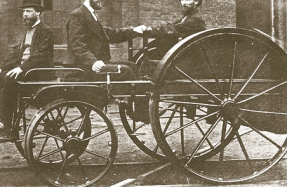
The mainstream press in Britain have always had something of an ambivalent attitude towards the railway system in this country, one minute lauding some achievement and the next saying how awful the railway companies/trains/officials are. In their eyes the railway companies ought to be able to provide additional facilities at the drop of a hat yet should keep their costs and fares at rock bottom prices. Therefore when bad weather strikes they should be able to make additional trains appear to take disgruntled commuters/ holidaymakers away home ‘just like that’. One example of this attitude occurred when a Bank Holiday Monday began with brilliant sunshine which brought the day trippers out in their thousands but suddenly, in the middle of the afternoon, a thunderstorm drenched much of the North West of England. This article will explore just what happened that day and recount some of the recriminations which flew around afterwards.
A bit of history
Before looking at the event we should look at the location, which was Southport in Lancashire, and take a glance at the railway facilities which were available on the occasion in question – Easter Monday 1952. The town used to have a number of stations which were originally served by a multitude of companies, the first being Chapel Street, opened on 22nd August 1851 by the Liverpool, Crosby & Southport Railway. This was followed on 9th April 1855 by the East Lancashire’s London Street station but this only lasted for a couple of years when it was closed with all traffic being transferred to the adjacent Chapel Street. Next up was Southport Derby Road (later Central) to serve the West Lancashire Railway line from Preston although this became a goods depot in 1901 when the Lancashire & Yorkshire Railway (which had absorbed all the already mentioned companies) diverted services into Chapel Street. This station eventually boasted eleven platforms for regular services plus two further ones for excursion traffic – these latter two were known locally as the London Street platforms, probably because they could be accessed from that thoroughfare. The LMS did not deign to distinguish them separately in the station index.
Finally there was Lord Street station which was opened on 1st September 1884, located on what was then the main boulevard in the town. It was created by the Southport




